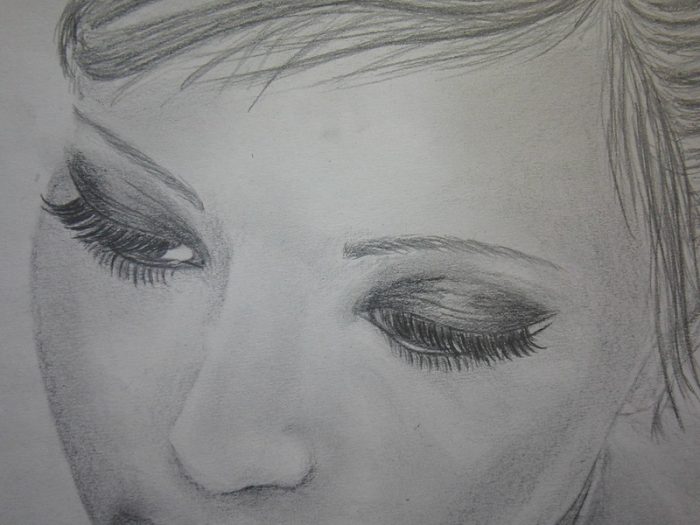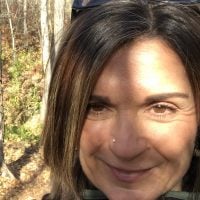Close your eyes.
Imagine a portrait. Look closer. It’s a portrait of you when you were born. You are innocent, composed of features and characteristics unlike anyone else’s. You are a true original.
Breathe in and remember the time when curiosity was your only guide. The external world was an extension of you. There was no right or wrong, acceptable or unacceptable, appropriate or inappropriate, us versus them. You were whole, undivided within yourself. You saw others as they were without judgment or projection—a pure experience of reality.
Maybe you had parents or guardians who loved you, and even if you didn’t, you depended on others to take care of you in order to survive. As you grew, you learned there were behaviors that received praise and those that displeased your caregivers. You learned to behave in ways which guaranteed your continued survival, safety, and love.
Over time, your original self-portrait began to change as parents, guardians, siblings, and anyone in authority wielded a brush and laid down thick layers of interpretations, projections, expectations, and preferences of who they thought you should be. Your authentic self, the original masterpiece that is each and every child born, was painted over. Only the characteristics that were acceptable seeped through, while those that were disapproved of and rejected disappeared beneath thick strokes of paint.
If you went through the process of socializing (and all of us did), you went through the process of splitting yourself into parts—those seen and unseen.
Exhuming those parts of us that are hidden in our subconscious is akin to a hero’s journey. There will be many discoveries and great pain. We will be given every opportunity to reclaim the parts we had disowned. We will enter the void and move straight in the direction of pain in search of our wholeness.
As a child, I suppressed huge chunks of my authentic self to exist in my family of origin. It was drilled into me that all adults, especially parents and relatives, deserved undiscerning respect. How I felt about them did not matter. As a result, I repressed my dislike and fear of certain adults and in doing so, lost touch with my feelings and intuition of who is safe and who is not.
Time and time again, I betrayed my child heart when I went against my inner guidance and did what I was told. In the name of obedient, blind respect, I did not speak up for myself, or voice my opinion in front of my parents, teachers, or anyone in authority if it was different from theirs. I ordered my feet to stay still when they wanted to dance, my mouth to be silent when it wanted to speak, and my eyes to stop crying when I felt sad. I became the obedient, good girl of the family—a projection of who my caregivers believed to be a well-behaved, dutiful, and respectful child. It is here where the slow erasure of my true self began.
I entered adulthood with parts of me disowned, suppressed, and denied. For years, I wandered through life with the vague feeling that something inside me was missing and believed I was those strokes of paint that covered my original portrait. Self-awareness proved painful. I dodged the pain with alcohol, relationships, sex, overexercise, codependency, and venting—all forms of self-harm.
The parts I had suppressed became responsible for attracting my romantic partners—those who became my mirrors, screens on which my subconscious projected the parts invisible beneath the layers of paint. I was a match to them and they to me. I recognized in them what I repressed in myself.
I attracted a man who eventually betrayed me by lying, cheating, manipulating, and hiding his true self from me. I experienced an extreme aversion to those qualities in him and in doing so, highlighted the level of rejection I had developed toward those very same traits in childhood.
The blinding pain of his final betrayal broke through my denial. For the first time, I became conscious of all the times I had used dishonesty, lies, manipulation, and deceit in order to keep myself safe at the expense of others. I not only felt the pain of his betrayal, but also the pain of those I had betrayed throughout my life. As a result, I rediscovered my innate integrity.
The thing about characteristics that we have denied and suppressed in ourselves, both positive and negative, is that although they are invisible to us, they are completely visible to others. A few years ago, at a self-development retreat, I was shocked when I was voted the most courageous person of the group. What? I thought. I’m a coward. Although I recognized courage in others, I saw myself as the quiet, invisible, little-wee-mouse of my childhood. These were traits of survival that had kept me small and protected me from the dysfunction in my family. Had I exercised my trait of courage then, I’m sure it would not have gone well.
The day courage was projected on to me by others, I was able to go back and see all the times I had acted courageously in my life. I was able to let go of the projection of invisibility and begin to accept myself as courageous.
Our extreme positive or negative reactions to others are the perfect opportunity for self-awareness. When I accuse someone else of projecting without taking the opportunity to look for the same, not-so-stellar aspects within myself, I perpetuate the childhood wounding.
Projection is an excellent tool for healing and reclaiming our original portraits. The following are seven steps that have helped me along the way.
Notice what irks me about others.
When I notice negative traits and aspects in other people that I don’t like, I make a note of them. This serves as a dowsing rod that leads me to the parts of myself I had rejected, disowned, or suppressed in childhood.
Could there be a positive intention?
Next, I ask myself: What could be the real positive intention for why that person is behaving in that negative way or possessing that negative characteristic? (A clue is that it will always be something that will prevent them from getting hurt.)
Possible reasons for the negative trait.
Going deeper, I brainstorm about possible reasons for why it wasn’t safe for them to be the opposite of those negative traits? For example, if they are dishonest, why wasn’t it okay to tell the truth growing up?
Am I in denial of the same trait in myself?
This next step brings the spotlight back on me and has proven the hardest to master. No matter how much I want to deny it or not admit it, the aspects that I despise in others are always a reflection of myself. (Ouch). I ask myself why I would deny this aspect of myself to myself and what would have happened in childhood had I used it.
Accept this trait as mine.
With great gentleness and vulnerability, I open my mind to the possibility that these traits are mine. Either I am like the things I abhor in others or, those things I hate in them are so covered up and so rejected in me that I never do the same thing to the degree that’s unhealthy. I then ask myself why it was unsafe to be the opposite of that negative trait in childhood? For example, why was it not okay for me to be bored?
Find approval within.
Find approval and acceptance for the things I dislike in other people and then do the same for myself in a way that feels loving. This is not spiritual bypassing. I can’t say, oh they’re selfish and I like that about them. Instead, I may realize that there are aspects of selfishness that are positive, like the ability to put my own needs ahead of the needs of others.
Repeat with positive traits.
What do I admire, envy, or fall in love with in other people, be it partners, friends, or celebrities? Why was it dangerous to practice that trait in childhood? For example, if I am overly serious and envy people who are silly and lighthearted about life, why was it not okay for me to be silly and lighthearted growing up? I then challenge myself to find ways to express those traits in my life.
We can’t heal something we can’t see. Projection is a great opportunity to make visible the aspects of ourselves we repress.
By being curious about our projections and judgments of other people, whether positive or negative, we can stand between the darkness and the light and experience ourselves as fully human.
~












Read 6 comments and reply